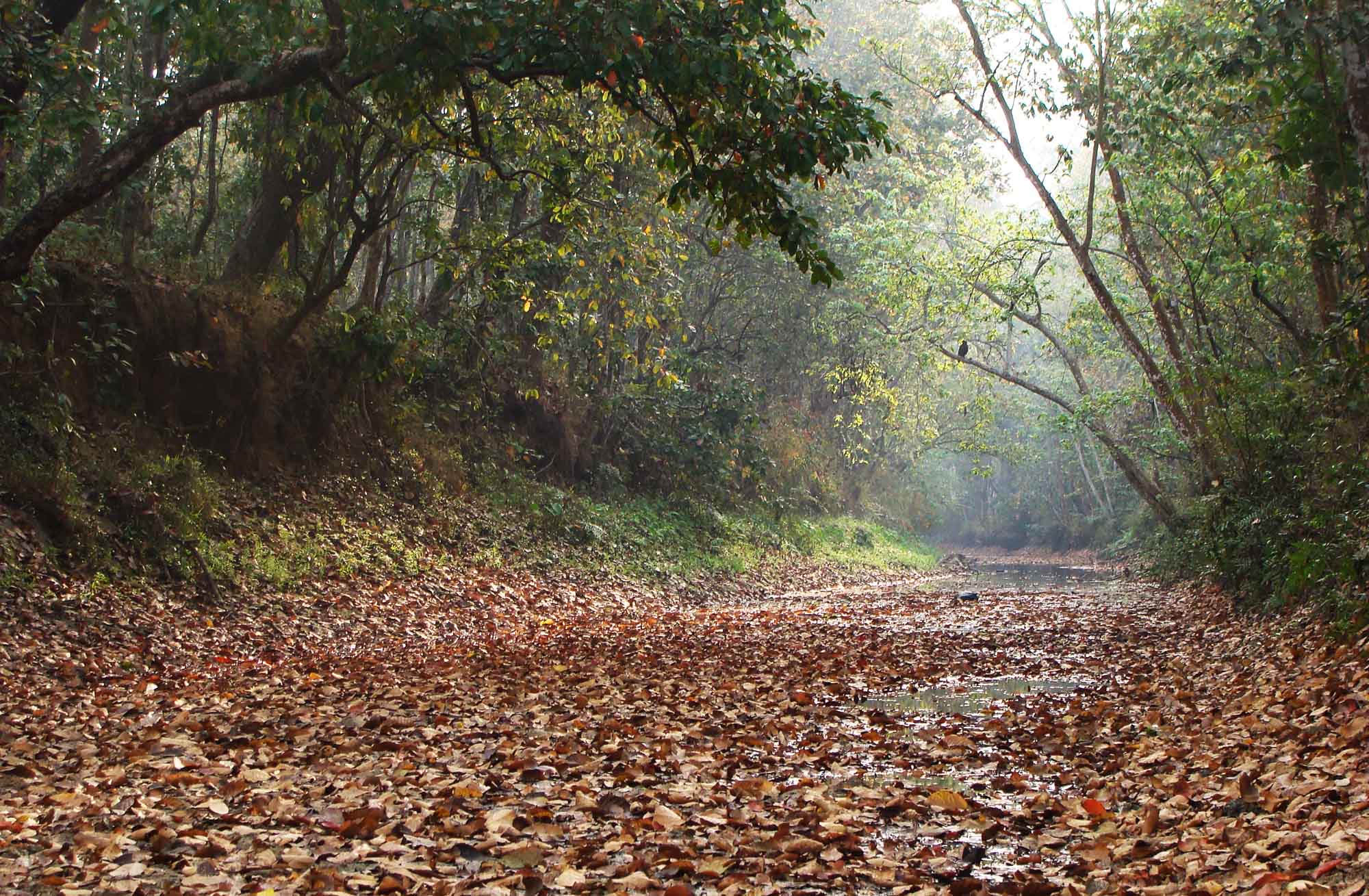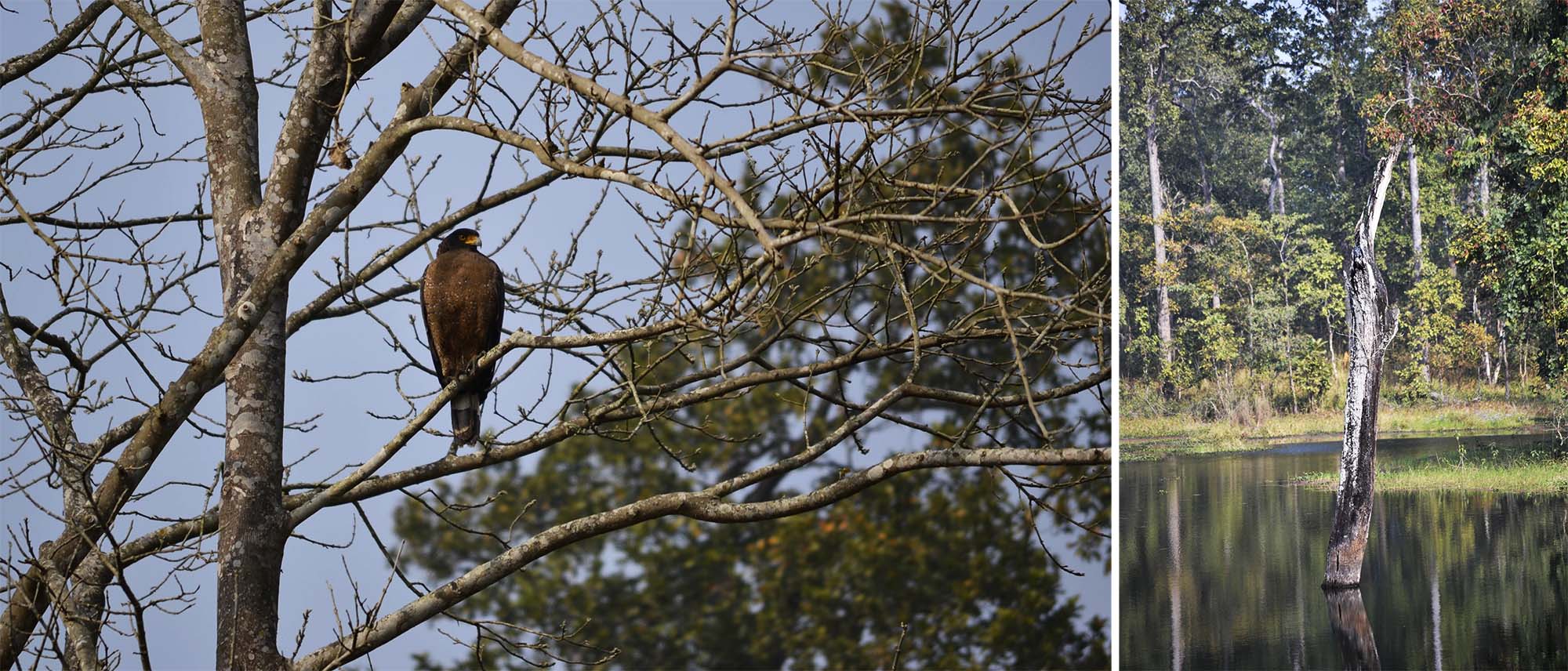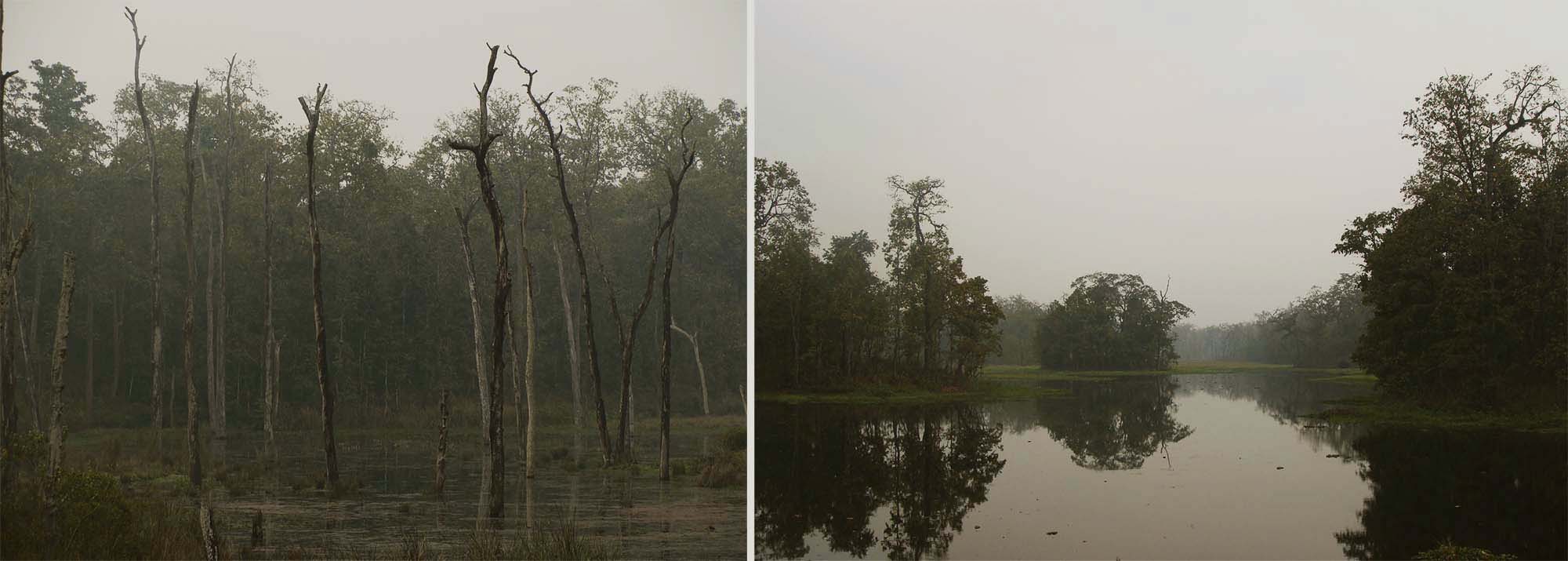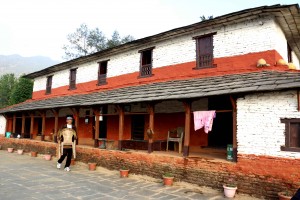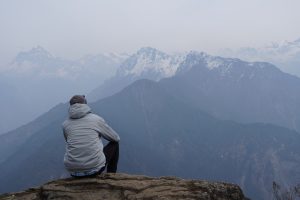Riding in the misty, nippy autumn morning, we arrived at a rusty iron gate. The gate was locked and so was the small hut just behind it, the ticket counter for entry to Beeshazar Tal.
It was already lit, but it seemed it would be a while before anyone would come to open the gate. My friends and I had arrived there before dawn just so that we could be at the lake at the earliest. We decided to go in anyway; we would pay for the tickets on our way out. We climbed over the gate and began the walk toward the lake that translates as “Twenty Thousand Lakes.”
I was carrying in my head an image of Beeshazar Tal: a patch of deforested sal forest that was interesting only because humans did not inhabit it. And at first sight it was not much different from that image. The lake was not aesthetically appealing.
Soot-colored tree trunks, limbless and leafless, stood in the water, looking like some kind of installation art on the theme of impermanence. Coots glided soundlessly, foraging among the plants. When spooked, they took off in that beautiful motion of flapping wings and trailing feet that etched an ephemeral runway on the water’s surface.
This, of course, was hardly exceptional. But what made the place appealing was the timing. We had got there when the jungle was coming to life.
***
A small wonky wooden bridge spanned a canal that ran between the lake and the marshy meadows to the south. We found a different world on the other side of that bridge.
A graveled road ran between the canal and the wetlands. The canal was some seven feet lower than this road, a dank trough filled with fallen rufous and yellow leaves. Patches of water showed through the leafy carpet. The tops of trees on both banks leaned inward, creating an arched canopy that turned the canal into a tunnel. Standing on the water level, I looked upstream and it was a surreal sight, still and silent save for the occasional leaf that fell like a whisper.
Patches of water shows through the leafy carpet of the canal at Beeshazar Lake. Photo: Author. (Opener) The lake during afternoons. Photo: Nischal Tiwari/Wikimedia Commons.
There was too little water in the canal to push through the carpet of leaves. In fact, it was only by descending to the water level that you could see the water. My shadow cast on the water, and I saw a tiny turtle swim in a panic for the shelter of leaves. Downstream, from where I stood taking in the sight, a puny kingfisher, piqued by my presence, became histrionic, going teep-teep-teep and darting to and fro from a branch. It was clear it needed solitude to perform its meditative method of fishing. If the definition of a wilderness is a place unused to humans, the jitteriness of the turtle, the kingfisher and the coots were all evidences I was in a wilderness.
It was then that I noticed a dark figure in the tree a little upstream. It was a Crested serpent Eagle. I moved forward stealthily to get a photo of the predator. It got within range of my camera, but as soon as I raised my camera the eagle flew away, muttering, I am sure, profanities in ‘Eaglish’.
For the next ten minutes the eagle and I played this game of chase and flight. Every time I thought I had him, the eagle waited until the very last moment before flying away. It was a hopeless case of pursuing a beautiful creature, and the eagle was in no mood for posing for me. I gave up after a while.
But I liked it down in the canal, so I lingered there. As I was photographing the leaves on the water, I saw through the corner of my eye something black descend down the embankment into the water. I looked up and saw a sambar doe saunter across the canal and up the opposite bank.
Early morning, the jungle comes to life. Photos: Author
The doe hadn’t seen me. I was concealed by a tree’s exposed roots. Now I had another subject for photography. I climbed hastily up to the road, afraid my friends, who were chatting and walking on the road, would spook the doe before I got to her. I motioned to my friends to keep quiet and pointed down the road. Within seconds the doe appeared on the road. She crossed it and began munching on a bush. The bend on the road afforded us good cover under which to advance toward her.
We made some progress but when the road straightened out, our cover was gone and without it the deer quickly noticed us. In one leap, it crashed into the dense undergrowth. It felt like a dream had just ended.
***
We walked on and came upon a herd of chital browsing. Immediately they stopped grazing and looked up, ears cocked, eyes locked on us. It took them a minute or two to realise that we meant no harm. Then they went back to grazing. The place was turning out to be wilder than I had expected. I began to entertain thoughts of a tiger sauntering across the road—or at least roaring somewhere in the vicinity.
“We had been privy to a magnificent early morning show on Nature.” Photos: Author.
Almost in the same instant that I first noticed the place as a possible tiger habitat, a motorbike sputtered toward us. The outer world moved in to claim a share of this natural domain. We took the motorbike’s arrival as our cue to leave.
When we crossed the wooden bridge back to Beeshazar Tal we saw a couple of uniformed high school students there. They were truants, some out on a date, others simply there to escape the confinement of classrooms. We had been privy to a magnificent early morning show on Nature, but now it was clearly the hour of love birds.
Checklist
A panoramic view of the lake. Photo: Wikimedia Commons
Getting There

To get to Beeshazar Tal (also called Bis Hazari) from Narayanghat, head south on the main road, which is actually the Mahendra Highway. About eight kilometers later, you will arrive in a place called Tikauli. Turn right here, heading south-west. The entrance gate is another seven kilometers on a graveled road. There is another entry point further down the road. There is a small entry fee for the lake.
Caution!

Mugger crocodiles have recently been reintroduced in the lake. The place now has a small population of these wily predators. Even though they are not the man-grabbing monsters portrayed in movies, it is always better not to venture too close to the water or try to get close to them for that selfie you want so badly.
Places to Stay

Royal Century (00977-56-525865, www.royalcentury.com.np) is one of Narayanghat’s high-end hotels. If you are on a small budget, there is Hotel Satanchuli (00977-56-531930). It has the added advantage of being next door to the town’s bus station. It’s best to stay as close as possible to Beeshazar Tal, so that you don’t spend most of your early morning traveling there. Check for homestays in the villages near the lake.
Eat

Chitwan Tandoori Restaurant, located on Lions Chok, is highly recommended for their Indian cuisine.



